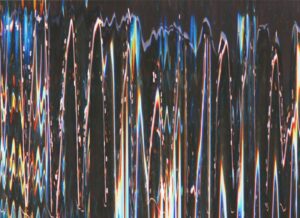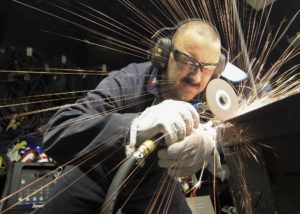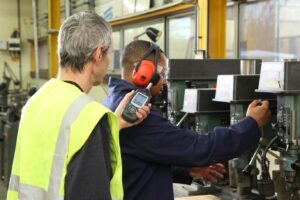The sound of silence
Dr Karen McDonnell, RoSPA’s Occupational Health and Safety Policy Adviser, discusses the importance of controlling noise in the workplace.

Credit: Alamy Stock
How important is your hearing to you? Where in your organisation’s risk management plan is noise reduction?
What impact does noise exposure at work have on the lives of your employees, and how many of the 11,000 workers in the UK that suffer from hearing problems due to noise exposure are ‘yours’?
Although it wasn’t written about this topic, for me the Simon and Garfunkel track ‘The Sound of Silence’ (released in the early 1960s) and the more recent cover version by Disturbed really help to convey the impact of hearing loss.
Most people recognise the direct effects that noise can have on the auditory system, resulting in noise-induced hearing loss, tinnitus or hyperacusis (sensitivity to loud noise). Even though these risks are often understood, the debilitating, disabling and isolating results of these permanent effects are greatly underestimated.
Many chemicals used in the workplace, and drugs such as some antibiotics or chemotherapy treatments, also have an ototoxic effect on our hearing system and can result in permanent hearing loss and tinnitus.
Less well-appreciated are the other known implications for health related to noise exposure – resulting in cognitive decline, coronary and circulatory problems and depression or stress.
We know that exposure to noise at work can cause irreversible hearing damage but it is preventable
One more question for you. How many of the estimated one million UK employees exposed to levels of noise which put their hearing at risk are yours?
 According to the Health and Safety Executive (HSE), the industries most likely to involve high levels of noise are construction, demolition, woodworking, engineering and manufacturing.
According to the Health and Safety Executive (HSE), the industries most likely to involve high levels of noise are construction, demolition, woodworking, engineering and manufacturing.
Across all industries, noise-induced hearing loss is responsible for the highest number of work-related personal injury claims. ‘Occupational deafness’ has been a prescribed disease under the Industrial Injuries Disablement Benefit scheme since 1975. In the last 10 years, it has consistently been one of the top three reasons (excluding lung conditions) for benefit awards under the scheme.
Instant noise-related hearing damage can occur from one episode of loud noise but most often, work-related harm is caused by prolonged exposure and is gradual.
All employers need to be aware of their duties under the Control of Noise at Work Regulations 2005.
Under the noise regulations, employers are required to:
- Conduct a risk assessment to identify if there is a noise risk to employees and to identify who may be affected
- Introduce control measures if needed to reduce noise exposure to comply with CNWR
- Identify any employees who need to be provided with health surveillance (hearing checks) due to noise exposure
- Provide employees with information, instruction and training about noise risks and any control measures being taken.
Further reading: How can we reduce and prevent occupational hearing loss? UKHCA Conference 2023
Under the Regulations, employers need to take specific action once noise levels (action values) set out in the regulations are reached. The action values relate to average noise exposure over a working day or week, and to the maximum noise (peak sound pressure) to which employees are exposed in a working day.
- The lower exposure action values are:
- Daily or weekly exposure of 80 dB(A)
- Peak sound pressure of 135 dB(C).
- The upper exposure action values are:
- Daily or weekly exposure of 85 dB(A)
- Peak sound pressure of 137 dB(C).
 When considering what control measures to introduce, clear advice is provided in HSE’s guidance on the regulations (L108), which is now in its third edition. The regulations set out a hierarchy of control measures, with eliminating the noise at the source at the top and providing ear protection at the bottom.
When considering what control measures to introduce, clear advice is provided in HSE’s guidance on the regulations (L108), which is now in its third edition. The regulations set out a hierarchy of control measures, with eliminating the noise at the source at the top and providing ear protection at the bottom.
Personal ear protection should only ever be considered after engineering controls and organisational measures (such as limiting the time spent in noisy areas) have been considered. The ideal is to design the noise out at source.
Damage to hearing is preventable if employers take the relevant action to assess and control the risks and provide health surveillance (hearing checks) for all staff who are regularly exposed to noise above the upper exposure level set out in the regulations, as well as for other employees who may be at risk of hearing damage.
For their part, workers need to take responsibility for their hearing by using any noise control devices or hearing protection provided to them, following prescribed working methods, attending any hearing checks and reporting any concerns about noise to their employer or safety rep.
Have you been listening… time to disturb the sound of silence around noise at work!
From April 2024, HSE will be focusing on the control of noise at work. Have you got it right?
From buying quiet machinery and power tools and controlling at source, to how employers check the condition, use, fit and fitness for purpose of the hearing protection provided, there is a lot that employers can do to mitigate the risks around noise.
Are you future fit? How are advances in technology linked to traditional noise control measures embedded in your forward plans?
Find out more about RoSPA by clicking here.
The sound of silence
Dr Karen McDonnell, RoSPA’s Occupational Health and Safety Policy Adviser, discusses the importance of controlling noise in the workplace.
Karen McDonnell
SHP - Health and Safety News, Legislation, PPE, CPD and Resources Related Topics
Indian manufacturing plant scoops fall prevention award
In praise of older workers
Rebecca Hickman appointed as new RoSPA CEO


 According to the
According to the  When considering what control measures to introduce, clear advice is provided in HSE’s guidance on the regulations (
When considering what control measures to introduce, clear advice is provided in HSE’s guidance on the regulations (